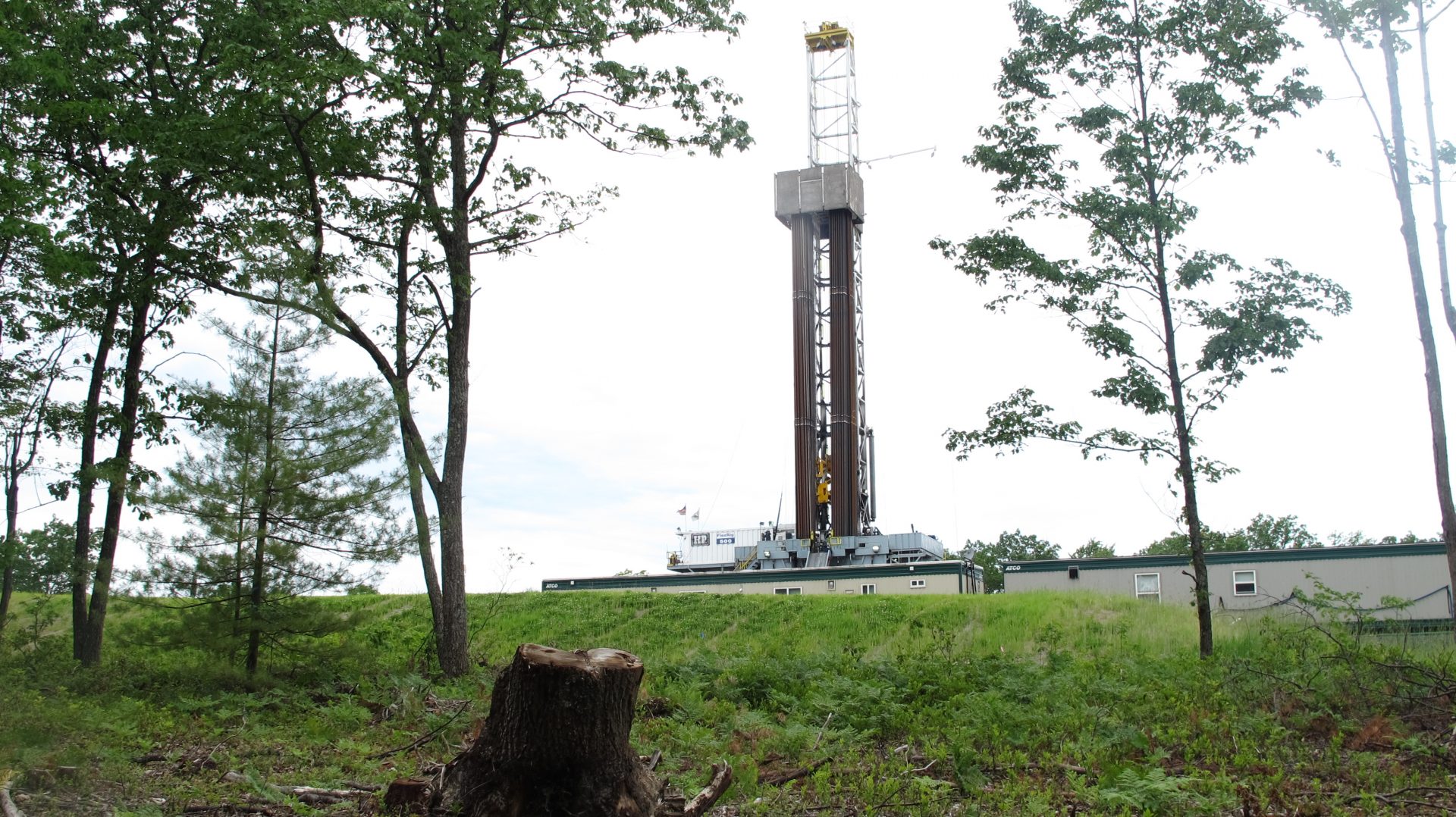
A gas rig in the Tiadaghton State Forest.
Marie Cusick / StateImpact Pennsylvania


A gas rig in the Tiadaghton State Forest.
Marie Cusick / StateImpact Pennsylvania

Marie Cusick / StateImpact Pennsylvania
A gas rig in the Tiadaghton State Forest.
Pennsylvania’s natural gas drillers extracted the largest volume of gas on record for a single year in 2019, according to the Department of Environmental Protection’s latest annual report on the industry.
Unconventional drillers extracted 6.8 trillion cubic feet of natural gas last year, a more than 10 percent increase from 2018.
The number of new wells drilled with hydraulic fracturing has been on a downward trend since a peak in 2014. Companies drilled 615 new wells in 2019, down from 777 the year before.
Pennsylvania doesn’t tax the gas companies extract, but charges a per-well impact fee. That fell last year, according to the state’s Independent Fiscal Office.
The IFO also reports the rate of growth for gas production has been ticking down since a high point in mid-2018, likely due to persistently low prices.
Gas company representatives tout the industry’s growth and 90 percent drilling fluid recycling rate as good for the state’s economy and environment.
“And we’re doing so with an exceptional inspection compliance rate, reflecting our commitment to safety, operational excellence and public health,” said Marcellus Shale Coalition president David Spigelmyer.
A recent grand jury report detailed numerous health and environmental impacts of the natural gas industry and called out state regulators as unprepared to corral the industry during the start of the gas rush.
DEP conducted more than 35,000 inspections across both conventional and unconventional well sites and collected $4 million in fines.
The agency found 985 compliance violations out of nearly 19,000 inspections at unconventional sites. At conventional sites, inspectors found 1,763 violations from 12,000 visits.
Conventional operators drill vertical wells that are shallower compared to unconventional operators, which use horizontal drilling and hydraulic fracturing to reach deeper deposits of oil and natural gas in rock formations like Pennsylvania’s Marcellus shale.
The state’s more than 70,000 conventional wells produced about 71 billion cubic feet of gas in 2019. There are about 8,400 active unconventional wells.
The latest report also documents nearly 12,000 abandoned wells. DEP estimates there could be as many as 200,000 of them, many of which predate regulatory oversight. The orphan wells can leak methane into the air and possibly contaminate groundwater or surface water.
DEP and the Pennsylvania Department of Conservation and Natural Resources are now working to measure methane leakage from identified orphan wells in the Cornplanter State Forest
“We know there are thousands of old, abandoned wells in Pennsylvania, but we don’t know how to quantify the threat these wells pose to our environment, especially from a climate change angle,” said McDonnell. “This research will help us put that into perspective and help guide how to prioritize well-plugging in the future.”
StateImpact Pennsylvania is a collaboration among WITF, WHYY, and the Allegheny Front. Reporters Reid Frazier, Rachel McDevitt and Susan Phillips cover the commonwealth’s energy economy. Read their reports on this site, and hear them on public radio stations across Pennsylvania.
(listed by story count)
StateImpact Pennsylvania is a collaboration among WITF, WHYY, and the Allegheny Front. Reporters Reid Frazier, Rachel McDevitt and Susan Phillips cover the commonwealth’s energy economy. Read their reports on this site, and hear them on public radio stations across Pennsylvania.
Climate Solutions, a collaboration of news organizations, educational institutions and a theater company, uses engagement, education and storytelling to help central Pennsylvanians toward climate change literacy, resilience and adaptation. Our work will amplify how people are finding solutions to the challenges presented by a warming world.